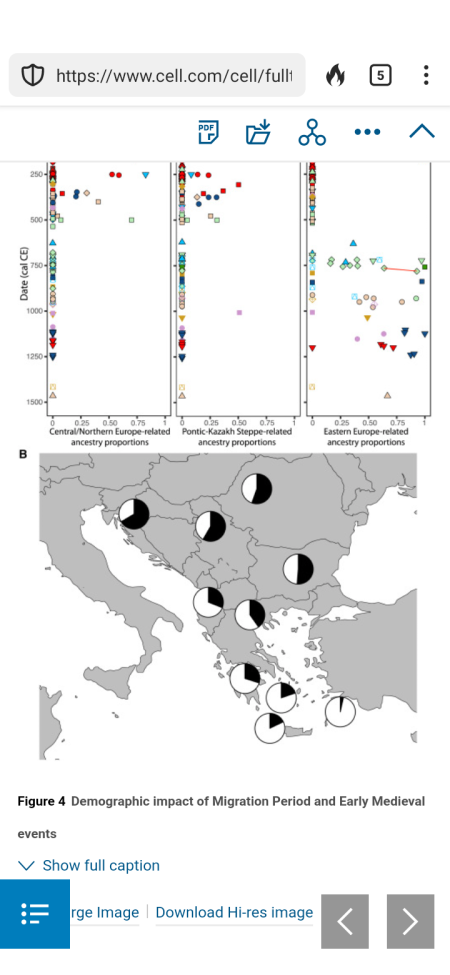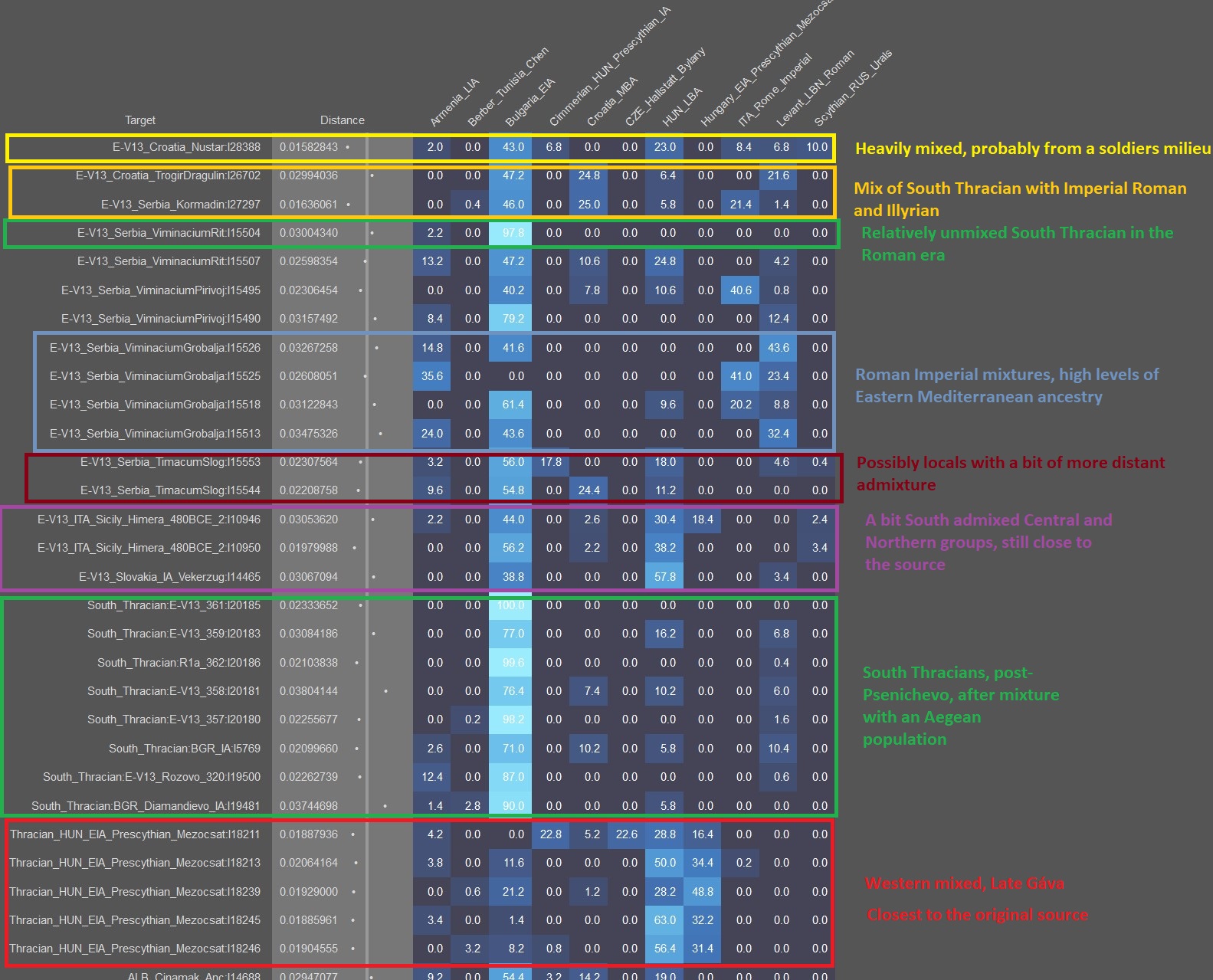I made an analysis of the most relevant E-V13 and related (Mezocsat-Late Gáva) samples, including the new ones:
Image E-V13-New-Commented hosted in ImgBB

ibb.co
As can be seen in the graph, most of the new samples look like recently mixed individuals of North and South Thracian descent, which mixed primarily with "Imperial Roman" or generally East Mediterranean people, but also Illyrians and to a lesser degree with other people.
Therefore I think these are people from a mixed genetic-cultural Roman context, with the more local population being largely hidden from us behind the cremation wall, so to say. But these people come, on average about 1/2, one parent, from these locals of various Daco-Thracian origin. It looks like local elite males had married "Roman" (in the widest sense) wives. That's most evident in the Grobalja group, which represents 50 : 50 mixtures of Daco-Thracian : Imperial Roman/East Mediterranean.
The most South Thracian origin is clearly I15504, he looks like coming straight from the EIA.
We can also see that there is an older more Central-North Balkan cluster formed by the two Himerans and Vekerzug individual from Chotin, Slovakia.
My guess is that the local population of Viminacium before the Celts and Romans will have this exact profile. To me its just logical that the people which assimilated to Roman customs and married Roman partners were more likely to be buried in inhumation graves than locals which abstained from both - cultural adaptation and mixture with the newcomers.






